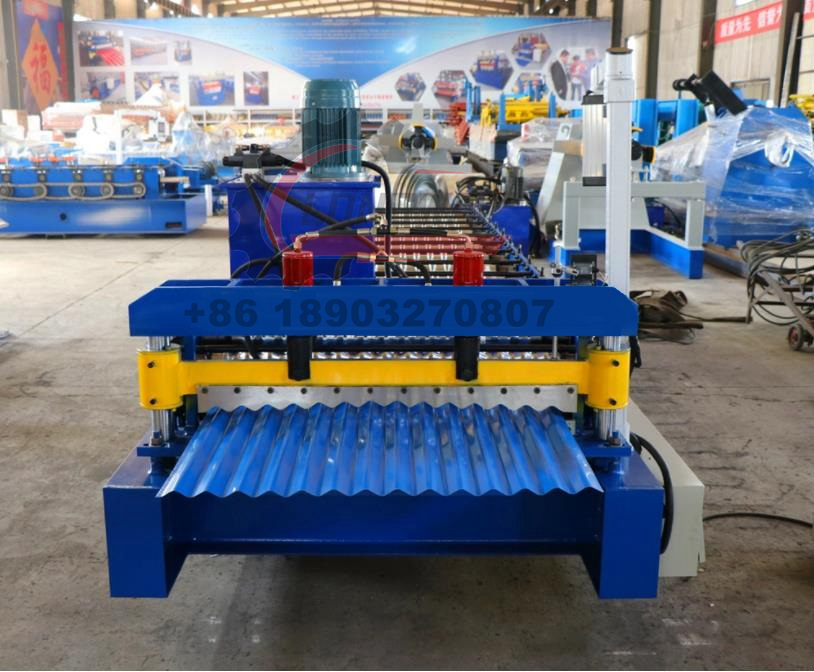Lightweight Keel Roll Forming Equipment for Efficient Building Construction Solutions
Light Keel Roll Forming Machine for Building An Overview
In the modern construction industry, efficiency, precision, and speed are essential. The demand for lightweight and durable building materials has driven innovations in manufacturing processes, particularly in the production of structural components such as keels. A light keel roll forming machine is a pivotal tool in producing high-quality light steel keels, widely utilized in drywall systems, ceilings, and other structural applications.
What is a Light Keel Roll Forming Machine?
A light keel roll forming machine is specialized equipment designed to produce steel keels through a continuous bending process. The machine converts flat steel strips into specific cross-sectional shapes by passing them through a series of rollers. This process allows for the mass production of structural components with uniform dimensions and high structural integrity.
The Importance of Light Steel Keels
Light steel keels serve as the backbone of various construction frameworks. These profiles are incredibly versatile and offer several advantages
1. Weight Efficiency Light steel materials are significantly lighter than traditional alternatives like wood or heavy steel, reducing the overall weight of buildings. This is particularly beneficial for large constructions where weight savings can lead to reduced foundation and structural support costs.
2. Strength and Durability Despite being lightweight, steel maintains excellent tensile strength. These keels are resistant to deformation, pests, and decay, making them a durable choice for construction projects.
3. Flexibility in Design The ability to readily produce different shapes and sizes of keels allows architects and builders to experiment with innovative designs without being hindered by material constraints.
4. Sustainability Steel is a recyclable material, contributing to more sustainable building practices. Using light steel keels reduces the demand for timber, thereby preserving natural resources.
The Roll Forming Process
The roll forming process employed by a light keel roll forming machine involves several stages
light keel roll forming machine for building

1. Feeding Flat steel strips are fed into the machine.
2. Roll Forming As the steel moves through the series of rollers, it undergoes gradual bending and shaping. Rollers are arranged in sequence to progressively form the desired shape of the keel.
3. Cutting After forming, the machine typically incorporates a cutting device to sever the continuous length of keel into specified sizes.
4. Finishing Depending on the design specifications, additional processes may include punching, welding, or coating to enhance the performance of the steel keels.
Benefits of Using Light Keel Roll Forming Machines
1. High Production Efficiency The automated nature of roll forming machines allows for rapid production with minimal human intervention. This leads to shorter production cycles and a quick turnaround for building projects.
2. Consistency and Precision The roll forming process ensures uniformity in the dimensions and properties of the keels. This consistency is crucial for large-scale construction, where variation can lead to structural weaknesses.
3. Cost-Effectiveness Although the initial investment in a roll forming machine can be significant, the reduction in material waste, labor costs, and increased production speed often leads to overall cost savings in the long run.
4. Adaptability These machines can be designed or modified to produce various profiles based on market demand, providing manufacturers with flexibility in catering to different construction needs.
Conclusion
The light keel roll forming machine represents a significant advancement in modern construction technology. With the growing trend towards lightweight and sustainable building materials, these machines not only enhance manufacturing efficiency but also contribute to the overall integrity and sustainability of construction practices. As the industry continues to evolve, the role of light keel roll forming machines will undoubtedly expand, making them essential tools in the quest for innovative and eco-friendly building solutions. In summary, their ability to produce high-quality, precision-engineered light steel keels will remain a cornerstone in the structural framework of tomorrow's buildings.
-
Roof Panel Machines: Buying Guide, Types, and PricingNewsJul.04, 2025
-
Purlin Machines: Types, Features, and Pricing GuideNewsJul.04, 2025
-
Metal Embossing Machines: Types, Applications, and Buying GuideNewsJul.04, 2025
-
Gutter Machines: Features, Types, and Cost BreakdownNewsJul.04, 2025
-
Cut to Length Line: Overview, Equipment, and Buying GuideNewsJul.04, 2025
-
Auto Stacker: Features, Applications, and Cost BreakdownNewsJul.04, 2025
-
Top Drywall Profile Machine Models for SaleNewsJun.05, 2025








